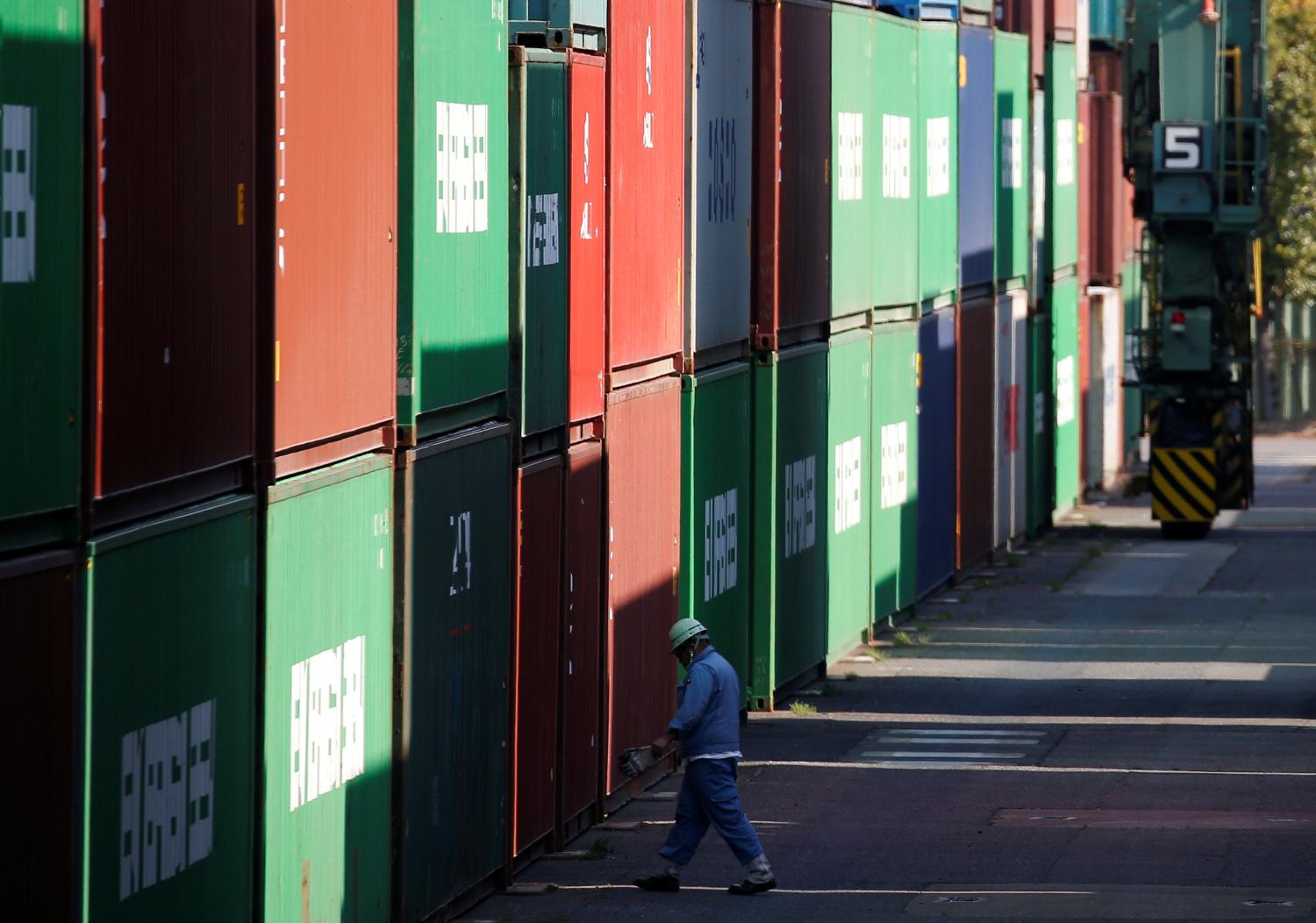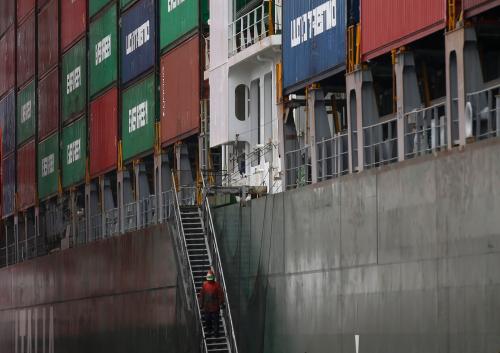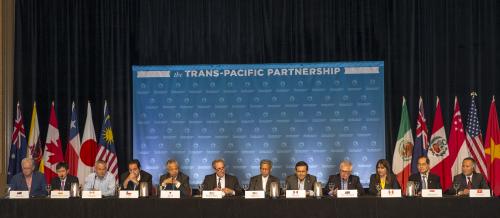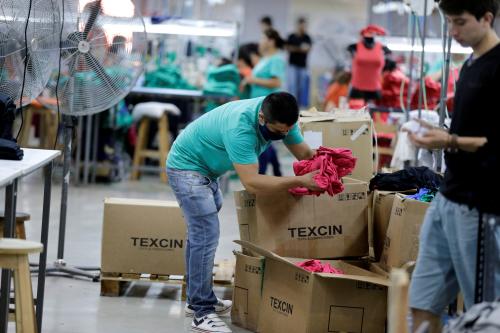On February 22, 2017, the World Trade Organization’s (WTO) Trade Facilitation Agreement (TFA) entered into force. The TFA was concluded at the WTO Bali Ministerial Conference in 2013. Since then, countries have been working on implementing the agreement in their domestic markets to reach the two-thirds requirement for implementation.1 As of March 2017, 113 members (or 69 percent of WTO members) have ratified the agreement—including 19 Latin American and Caribbean (LAC) countries—and another 93 countries have notified the WTO of their timeline for each TFA provision, giving a comprehensive picture of the state of the agreement.
This implementation of the TFA is a positive reminder that countries around the globe are still committed to improving the international trading system and promoting free trade. It also demonstrates the ability of countries to agree on a single set of standards for all countries, developed and developing alike. Unlike past agreements, the TFA does not water down its requirements to accommodate less developed countries. Instead, it allows these countries to implement the provisions on their own timeline and gives them access to technical assistance and capacity building resources to ensure full compliance with the TFA’s standards. Finally, the TFA agreement provides a critical update to the rules that govern the transit of goods. International trade has evolved significantly since the WTO wrote its rules on customs, shipments, and technical barriers to trade. The TFA effectively catches up to the new realities of trade where faster, cheaper, and more efficient shipping and processing is required.
International Trade: A Changing Landscape
Over the past 20 years, the international community has made significant progress in dismantling barriers to trade. Applied tariffs were reduced (or eliminated where possible), quotas were removed, and free trade agreements (FTAs) proliferated. This led to shifting patterns of global trade and a new regulatory architecture. Between 2000 and 2008, world exports grew more than 10 percent a year on average. At the same time, developing countries started to engage more in global commerce, and trade among developing countries (i.e., South-South) and between developing and developed countries (i.e., North-South) steadily increased. In 1990, South-South trade accounted for just 5 percent of global trade; today it accounts for roughly 20 percent.
During this period, countries negotiated bilateral and plurilateral FTAs, creating a complex network of agreements. The FTAs brought down barriers to trade by streamlining procedures and expanded trade by opening new markets and allowing goods and services to move efficiently across borders. However, the onset of the global financial crisis represented a major setback for the global trading system. Between 2008 and 2009, international trade flows dropped precipitously. Although trade recovered in the immediate post-crisis years (early 2009 to mid-2011), it has remained stagnant ever since and, most recently, has contracted. Anemic demand from developed countries, weak growth in developing countries’ imports, and lower commodity prices resulted in feeble growth in world trade. Additionally, the barriers to trade have changed. With relatively low tariffs levels and so many FTAs, the real impediments to trade are non-tariff and technical barriers. This means that countries need to find new ways to stimulate trade and economic growth. One of the most pragmatic and effective ways to do this is through the implementation of trade facilitation initiatives.
Why Trade Facilitation? Why Now?
The result of the Brexit referendum in June 2016, the decision by the United States not to ratify the Trans-Pacific Partnership, and recent calls to renegotiate or outright dismantle the North American Free Trade Area have halted the trend toward larger and larger preferential trade agreements. It is difficult to predict how the global trade architecture will evolve in the next few years. We could witness a resurgence of mega-agreements; a new wave of regionalism lead by China; a further proliferation of bilateral agreements worldwide; or a growing number of trade frictions that could damage the international trade system enshrined in the WTO. In this context, part of the appeal of trade facilitation is that it does not require formal negotiations—unlike free trade agreements—and is therefore more politically feasible in the current climate. Trade facilitation provisions directly target the barriers impeding trade, such as lack of transparency, duplication of documentation requirements, and the absence of automatic data submission procedures. In that sense, trade facilitation can act as a tool or “technology” at the multinational, regional, and national levels to (1) improve the efficiency of the existing regulatory trade architecture; (2) address new structural changes in trade; (3) complement investments in commercial infrastructure; (4) absorb new disruptive technologies in trade; and (5) maintain the momentum of trade liberalization.
Improving the Efficiency of the Existing Regulatory Trade Architecture
Multilateral initiatives
Despite the complex network of FTAs and the fact that international trade is increasingly organized within global value chains, there has been little effort to coordinate the global regulatory architecture. The WTO’s TFA is the first multilateral agreement to do so, and it was long overdue. The TFA will dramatically improve the regulatory architecture through the harmonization and standardization of global best practices that govern the movement, release, and clearance of goods. This will create more transparency and predictability at the border, which will help producers tap into global value chains and participate more in trade. The payoffs from these reforms are significant. The WTO estimates that the TFA can reduce total trade costs by more than 14 percent for low-income countries and more than 13 percent for upper middle-income countries. Latin American countries could see trade costs reduced by between 12 percent and 23 percent. The TFA would also reduce the time it takes to import by over a day and the time it takes to export by almost two days.
The international community knows the potential payoffs and is helping move the trade facilitation agenda forward. For example, the World Customs Organization is assisting WTO member countries in implementing the TFA by providing guidelines for governments that include key steps required for accession and compliance. It is also providing technical support and capacity building and sharing national best practices to help expedite implementation. Similarly, the Global Alliance for Trade Facilitation 2 is working to engage the private sector and promote business awareness and engagement on trade facilitation. The alliance has partnered with companies and local trade associations to discuss and implement reforms. The group also provides technical and financial assistance to support capacity-building efforts.
DOWNLOAD THE FULL REPORT »
-
Footnotes
- The TFA stipulates that 110 of the 164 WTO members must ratify the agreement before the full TFA can be implemented.
- GATF is public-private partnership organized by the Word Economic Forum, the International Chamber of Commerce, the Center for International Private Enterprises, with the governments of Canada, Germany, the United Kingdom, and the United States.
The Brookings Institution is committed to quality, independence, and impact.
We are supported by a diverse array of funders. In line with our values and policies, each Brookings publication represents the sole views of its author(s).









